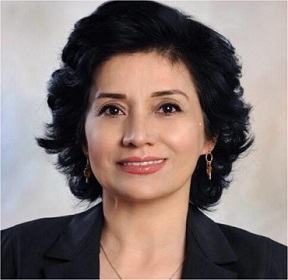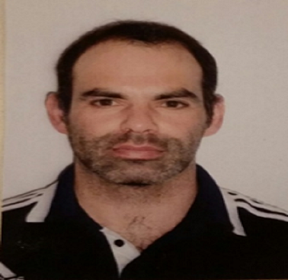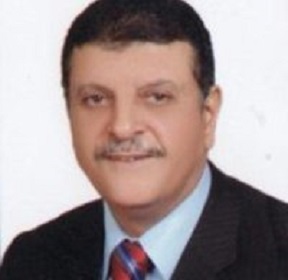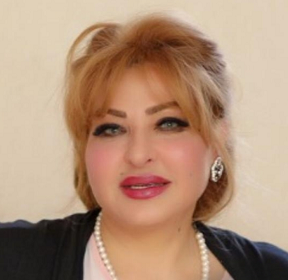Keynote Forum
Helen Gharaei
Tehran University IranTitle: COVID-19 pandemic: Implication on pain injection drug therapy
Abstract:
COVID-19 pandemic has emerged to bring about a new shift in our beliefs toward chronic pain management. Since the disease lowers the body's immune system, the use of drugs that suppress immune system is not recommended during pandemic. These include steroids that the side effects of them have always been discussed, but have never been taken as seriously as they are now.Many other medications have been discussed to relieve pain from simple oppressed ones like dextrose water and normal saline to local anesthetic and many adjuvants and regeneration therapy which some of them have never been routinely used for pain injections. It's time to dump steroids and move on them. The use of these medications in clinical practice is less auspicious and more research is needed on the practical application of them. Further areas for research include studies to determine definitive efficacy and further safety assessment, determine whether the analgesic effects of these drugs are time-dependent and the optimal identification of candidates, volume and concentration and intervals of injection are essential for routine application in pain practice.
Biography:
Helen Gharaei has completed her MD in the Mashhad University of Medical Science (1992) and postdoctoral studies in anesthesiology in Uremia University School of Medicine and has got her pain fellow degree from Tehran University of Medical Science from Iran (2012), and FIPP degree (Fellowship of Interventional Pain Practice) from Texas Tech University, USA (2013). She has specialized training in minimally invasive chronic pain procedures for medically challenging patients and practice in a private multidisciplinary clinic in Tehran, Iran. She has published many books and papers focusing on the safety of pain injection and has been serving as an editorial board in the reputed journal. She invited as a speaker in many international conferences from the beginning of her professional carries. She is an international trainer & researcher and known as a pioneer on ultrasound-guided spine injection, especially she is the inventor of the IRAN technique in spine injection. She has been teaching at multiple interventional pain management courses including cadaver workshops of ultrasound & fluoroscopy-guided pain injection locally and abroad. She is an education committee in interventional pain and spine center (IPSC) and founder of Son- Guide Pain Injection School of Iran. She constantly contributes to the growth of pain education worldwide.
Henrico Erasmsu
University of Zululand South AfricaTitle: Rugby injury incidence in semi-rural University team
Abstract:
Rugby Union is a very important international sport, while in South Africa it played an important part in unifying racial groups in the country during challenging political times, making it the second most popular sport in South Africa. It is contact sport and due to the nature of the sport, players experience high injury incidences. Rugby players in rural areas might experience unique challenges and risk of injury. Rugby injury incidence in rural areas has not been well researched and it is unclear if rural based teams in South Africa are at increased risk of injury. Aim: The aim of this study was to determine the overall injury incidence of the male senior rugby team at the University of Zululand during the competitive part of the 2019 season and to compare the injury incidence between matches and training. Methods: This study used a purposive, quantitative design which included 30 rugby players from the University of Zululand`s first team and collected training and match injury data during the competitive phase of the season. Injuries were expressed relative to exposure as number of injuries per 1000 hours of exposure. Results: a total of 52 injuries were recorded over a period of 5 months which included training and matches. The overall injury incidence was 22.9 injuries per 1000 hours of play. Most injuries occurred during matches - especially during the first period of the competitive season, whilst training injury incidence increased during the last and most competitive part of the season. Conclusion: As expected, injury incidence during matches were significantly higher than during training. Training injury incidence increased unexpectedly in the periods preceding the most important matches. The overall injury incidence was higher than expected. It is difficult to determine the exact reason why injuries were greater when compared to other relevant studies, but a possibility could be lack of rehabilitation, a smaller pool of reserve players, means of coaching and conditioning, incomplete recovery leading to residual fatigue, or how injured players are managed to prevent re-injury. Further research is indicated to determine if rural teams follow scientific training programmes based on correct principles of periodization, rest and recovery, especially close to important matches at the end of season and if players carrying injury are managed correctly throughout the year.
Biography:
Dr Erasmus is a registered Biokineticist with the Health Professional Council of South Africa, a board member of the Coaching and Education Commission of Judo South Africa, internationally accredited coach with the International Judo Federation and certified cycling, athletics and rugby coach in South Africa. He currently works as university lecturer at the University of Zululand. He holds a PhD from North-West University, South Africa, in the field of injury prevention. He has practiced as part of various sports medicine teams over the course of 14 years before starting a career as lecturer. His research interests are injury prevention during long term tathlete development (LTAD) and utilising pedagogical principles of physical education and coaching to improve practitioner-patient communication and injury rehabilitation.
Magdy Abouzeid
University of Alexandria EgyptTitle: Left Ventricular Performance Following Swim Training in Egyptian Wheelchair Swimmers (Amputee VS. Paraplegic?
Abstract:
Introduction: Athletes with special needs represent a growing population of sports participants. The Special Olympics is an international organization dedicated to empowering individuals who have physically and intellectual disabilities to become physically fit through sports training and competition. Subjects with parapleglegia and amputation don't use their legs in their daily lives which may affect myocardial efficiency. According to the law of use, so, not using the legs is considered to be amongst the factors affect the cardiac deficiency in general.Purpose: The aim of these study is determined and compared myocardial responses to intensive training (IST), 24 weeks, 6 times per week, 120 min per unit in male wheelchair swimmers (amputee vs. paraplegic).Subjects and Methods: To study these effects, seven below-knee amputee swimmers (AM) group aged (18.3 ± 0.88 yr), Ht (168.1 ± 1.67 cm), Wt (68.2 ± 3.7 kg). Compared with seven paraplegic swimmers (PR) group aged (18.6 ± 0.92 yr), Ht (167 ± 2.16 cm), Wt (68 ± 4.58 kg). All subjects group underwent two – dimension and M-mode Echocardiography at rest, and arm crank ergometry exercise test to determine max vo2 before and after (IST)Results: All analyses were performed by spss, mean ±S. D, t. test estimated differences between the two groups and % improvement. There were significant differences for myocardial parameters and max vo2 (L/min) after (IST) for both groups. The significant observation in this study indicates that below-knee amputated swimmers showed a greater improvement in myocardial parameters and max vo2 than paraplegic swimmers.Discussion \ Conclusion: Intensive swim training (IST) improved cardiac dimension and function performance, and vo2 max in wheelchair swimmers. The active lower limb muscles increase the ability of the musculoskeletal pump in the legs to be activated also contributes to venous pooling. Persons with scl (spinal cord injury) can benefit greatly by participation in exercise activates.
Biography:
Prof.Dr. Magdy Abouzeid is Professor of sport science, physical education at the University of Alexandria University, faculty of Sports Education, Egypt. He received a PhD (1983) in Physiology of exercise training from Alexandria University, Egypt. He has authored over 100 publications in sport science, sport pedagogy, and adapted physical activity, and has edited several books in the area of Aquatics sport training. Dr.Magdy abouzeid is Vice President of International Throw ball Federation, member of world organizations and institions of sport, member of scientific committee and reviewer for the"Ido movement for culture, Journal of martial Arts Anthropology, Member of Egyptian universities Promotion committee(EUPC) .Also reviewer of Horizon Research Publishing, USA (HRPUB).He has been a visiting professor at Suwon University, South Korea(2008-2009).He was awarded with several prestigious international awards including; winner of prince Feisal Bin Fahd International Prize for Arab sports research development(Sixth session(Sport Medicine-2009) ,Dr. Magdy was an IOC research scholarship winner,the Award of the 2008ICSEMIS Committee(China, Guangzhou). His current research interests include adaptation to exercise training, training in young athletes, sports and paediatric cardiology Aquatic sports training and its effect on functional capacity, sport for peace and development and another Paralympic research.
Kroline Abdalaziz
Damanhour University, EgyptTitle: Molecular aspects of hydrogen sulfide (H2S) in cardiovascular pathology
Abstract:
Cardiovascular diseases are the most leading reasons for mortality worldwide. In the past few years, hydrogen sulfide (H2S) and its donors have been strongly emerged and suggested as promising therapeutic agents in cardiovascular disease, due to their ability to reverse a wide spectrum of pathophysiological processes. Since, H2S and its donors have established their role as vasodilatory, neuromodulatory, anti-inflammatory and antioxidant agents. However, the interference of H2S with the other biological molecules during the pathophysiological conditions, particularly in cardiac failure represents an enigma and still unclear. For instance, it is beyond debate that the interaction of H2S and NO is controversial. We discuss the cardiovascular protective properties of H2S, the interference and cross-talk between H2S and NO, along with its interference with the other mediators under normal and pathological conditions. In this review, we demonstrate the rational and underlying mechanisms for its cardiovascular protective role against the development of cardiovascular diseases, including systemic and pulmonary hypertension; hypoxia in carotid bodies; periadventitial vasorelaxation; cardiac injury induced by ischemia, oxidative stress, and CaMKII. Furthermore, the molecular and possible mechanisms for the progression of atherosclerosis, and the anti- atherosclerotic role of H2S were discussed. Core tips: Despite that hydrogen sulfide (H2S) and its donors being considered promising therapeutic agents in cardiovascular protection, a wide spectrum of reviews and meta-analyses have been focused on their potent anti-hypertensive effect. However, little is known about their cardiovascular protective effect, whether at normal and or the pathological conditions. Our objective is to provide a bi-lateral vision on their performance at normal and pathological sets to understand the possible molecular targets, which H2S and its donors are affecting them that in turn, can help us to define the key factors for the effective treatment for cardiac and vascular diseases
Biography:
Professor Karoline is a former Dean of the faculty of Science (2014-2017) at Damanhour University. Currently, she worked as the Head of Zoology Department. Since 2012 she worked as a professor of Physiology in her institute. She has a wide experience in the applied and translational research in physiology and immunology. 1n 1995 she had earned the PhD at Zoology Department, Faculty of Science, Alexandria University, Alexandria, Egypt, and Harvard University, U.S.A. (Channel System Program). In 2016 she had selected as one of expertise in the field by the Scientific and practical expertise in the science necessary measurements for science and engineering projects Albeira Governorate.




